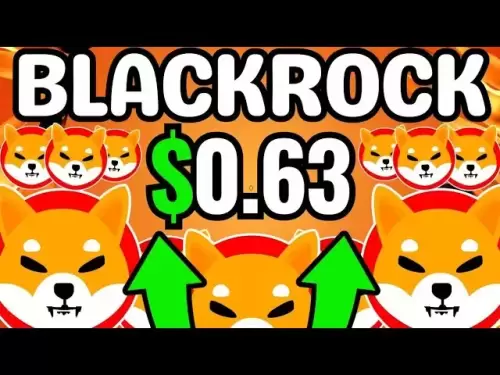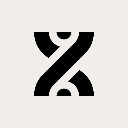-
 Bitcoin
Bitcoin $117700
-0.20% -
 Ethereum
Ethereum $3587
1.19% -
 XRP
XRP $3.422
-0.97% -
 Tether USDt
Tether USDt $1.000
-0.02% -
 BNB
BNB $733.3
0.69% -
 Solana
Solana $177.3
0.36% -
 USDC
USDC $0.9998
-0.01% -
 Dogecoin
Dogecoin $0.2446
1.42% -
 TRON
TRON $0.3183
-2.35% -
 Cardano
Cardano $0.8262
1.07% -
 Hyperliquid
Hyperliquid $44.37
-0.24% -
 Stellar
Stellar $0.4597
-0.87% -
 Sui
Sui $3.841
2.27% -
 Chainlink
Chainlink $18.44
3.20% -
 Hedera
Hedera $0.2658
1.54% -
 Bitcoin Cash
Bitcoin Cash $518.2
0.50% -
 Avalanche
Avalanche $24.38
4.08% -
 Shiba Inu
Shiba Inu $0.00001491
1.30% -
 Litecoin
Litecoin $112.7
10.87% -
 UNUS SED LEO
UNUS SED LEO $8.991
0.16% -
 Toncoin
Toncoin $3.183
-0.13% -
 Polkadot
Polkadot $4.377
3.56% -
 Uniswap
Uniswap $10.16
1.35% -
 Monero
Monero $325.1
2.08% -
 Ethena USDe
Ethena USDe $1.001
-0.01% -
 Bitget Token
Bitget Token $4.922
0.29% -
 Pepe
Pepe $0.00001343
3.62% -
 Dai
Dai $0.9999
-0.01% -
 Aave
Aave $319.5
-0.89% -
 Bittensor
Bittensor $416.3
1.23%
How to read a crypto chart for beginners?
Candlestick charts reveal crypto price trends through colored bodies and wicks, helping traders spot reversals and market sentiment.
Jul 20, 2025 at 12:29 am
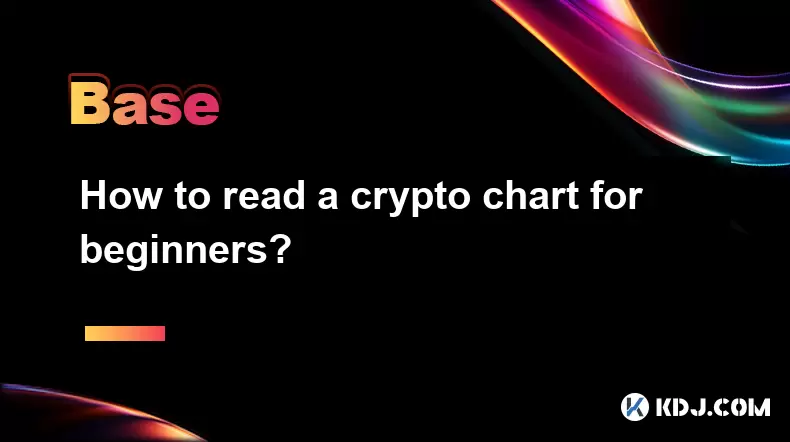
Understanding the Basics of a Crypto Chart
Reading a crypto chart begins with understanding the different types of charts commonly used in cryptocurrency trading. The most popular type is the candlestick chart, which provides detailed information about price movements over specific time intervals. Each candlestick represents a time period, such as one minute, five minutes, one hour, or one day, depending on the chart's timeframe. A candlestick has a body and wicks (or shadows), which show the opening, closing, high, and low prices during that time period. The color of the candlestick—usually green or red—indicates whether the price went up or down during the interval.
Another common chart type is the line chart, which connects closing prices over time with a continuous line. While it’s simpler than a candlestick chart, it lacks the depth needed for detailed price analysis. Bar charts are also used, showing the same information as candlesticks but in a different visual format. For beginners, focusing on candlestick charts is recommended because they offer more insight into market sentiment and price action.
Identifying Key Components of a Candlestick Chart
To interpret a candlestick properly, it’s essential to recognize its structure. The body of the candlestick represents the range between the opening and closing prices. If the body is filled (often red), it means the closing price was lower than the opening price—indicating a price drop. If the body is hollow (often green), the closing price was higher than the opening price—indicating a price rise.
The upper and lower wicks extend from the body and show the highest and lowest prices reached during that time period. A long upper wick suggests that buyers pushed the price up, but sellers eventually drove it back down. Conversely, a long lower wick indicates that sellers pushed the price down, but buyers managed to bring it back up. These wicks are crucial for understanding market dynamics and potential reversals.
Recognizing Common Candlestick Patterns
Certain candlestick patterns can provide valuable clues about future price movements. One of the most well-known patterns is the doji, which occurs when the opening and closing prices are nearly equal. A doji often signals market indecision and may precede a trend reversal. Another important pattern is the hammer, which has a small body and a long lower wick. It typically appears at the end of a downtrend and suggests that buyers are beginning to gain control.
The shooting star is the opposite of the hammer and usually appears at the top of an uptrend. It has a small body and a long upper wick, indicating that sellers are starting to take over. Engulfing patterns are also significant—when a large candle completely engulfs the previous candle, it can signal a strong reversal. Recognizing these patterns helps beginners anticipate potential price changes and make more informed trading decisions.
Understanding Chart Timeframes and Their Importance
Timeframes play a crucial role in reading crypto charts. Traders can choose from various intervals, such as 1-minute, 5-minute, 15-minute, 1-hour, 4-hour, daily, weekly, or even monthly charts. Each timeframe offers different insights. Short-term traders, such as day traders, often use 1-minute to 1-hour charts to spot quick entry and exit points. These charts provide detailed, real-time data but can be noisy and misleading due to short-term volatility.
Long-term investors typically rely on daily or weekly charts to identify broader trends. These timeframes filter out much of the noise and provide a clearer picture of the asset's overall direction. It's also beneficial to analyze multiple timeframes simultaneously. For example, using a 4-hour chart to determine the trend and a 1-hour chart to find precise entry points. This multi-timeframe analysis helps beginners avoid false signals and improves decision-making accuracy.
Using Support and Resistance Levels Effectively
Support and resistance levels are critical concepts in technical analysis. Support refers to a price level where buying interest is strong enough to prevent the price from falling further. When the price approaches a support level, it often bounces back up. Resistance, on the other hand, is a level where selling pressure is strong enough to stop the price from rising. When the price nears a resistance level, it typically reverses downward.
Identifying these levels involves looking at historical price action. Areas where the price has reversed multiple times are considered strong support or resistance zones. These levels can be horizontal or dynamic, such as moving averages or trendlines. Beginners should practice drawing trendlines by connecting previous swing highs or lows. When the price approaches a known support or resistance level, it can serve as a potential trading opportunity—especially if it aligns with other technical indicators.
Frequently Asked Questions
What does a long wick on a candlestick mean?
A long wick indicates that the price moved significantly in one direction during the candlestick period but then reversed. A long upper wick suggests rejection at higher prices, while a long lower wick shows rejection at lower prices. These wicks often signal potential reversals or strong support/resistance levels.
How can I tell if a candlestick pattern is reliable?
The reliability of a candlestick pattern depends on several factors, including the context in which it appears, the timeframe being used, and whether it aligns with other technical indicators. Patterns that occur at key support or resistance levels tend to be more reliable than those in neutral zones.
Why do different candlestick colors appear on the chart?
The color of a candlestick reflects whether the price closed higher or lower than it opened. A green (or hollow) candlestick means the price increased, while a red (or filled) candlestick means the price decreased. This color coding helps traders quickly assess market sentiment.
How do I choose the right timeframe for my trading style?
Your choice of timeframe should match your trading strategy. If you're a day trader, shorter timeframes like 1-minute to 1-hour charts are suitable. If you're a swing trader or investor, daily or weekly charts provide better insights. Always consider multiple timeframes to confirm trends and avoid false signals.
Disclaimer:info@kdj.com
The information provided is not trading advice. kdj.com does not assume any responsibility for any investments made based on the information provided in this article. Cryptocurrencies are highly volatile and it is highly recommended that you invest with caution after thorough research!
If you believe that the content used on this website infringes your copyright, please contact us immediately (info@kdj.com) and we will delete it promptly.
- XRP Mining, the GENIUS Act, and Coin Holders: A New Era?
- 2025-07-20 06:30:12
- Arctic Pablo Coin: Navigating the Icebound Estates Presale and Token Burn Strategy
- 2025-07-20 06:30:12
- Arctic Pablo Coin's Myth-Themed Presale: Icebound Estates and Beyond!
- 2025-07-20 06:50:12
- Snorter Token's Presale Success: Riding the GENIUS Act Wave in the Crypto World
- 2025-07-20 06:50:12
- PENGU Token's Breakout Momentum: Riding the Wave in a Bearish Market
- 2025-07-20 07:10:12
- Crypto's 100x Hunt in 2025: Beyond the Hype
- 2025-07-20 07:10:12
Related knowledge

What is the Inter-Blockchain Communication Protocol (IBC)?
Jul 19,2025 at 10:43am
Understanding the Inter-Blockchain Communication Protocol (IBC)The Inter-Blockchain Communication Protocol (IBC) is a cross-chain communication protoc...

How does sharding improve scalability?
Jul 20,2025 at 01:21am
Understanding Sharding in BlockchainSharding is a database partitioning technique that is increasingly being adopted in blockchain technology to enhan...

What is the "crypto trilemma" of scalability, security, and decentralization?
Jul 19,2025 at 06:28pm
Understanding the Concept of the Crypto TrilemmaThe crypto trilemma refers to the challenge of simultaneously achieving scalability, security, and dec...

How to get a job in crypto?
Jul 20,2025 at 08:14am
Understanding the Crypto Industry LandscapeThe cryptocurrency industry is a rapidly evolving space that includes blockchain technology, decentralized ...
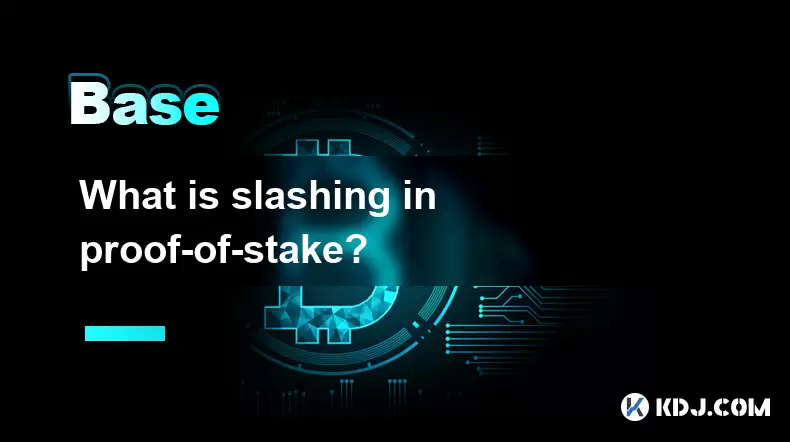
What is slashing in proof-of-stake?
Jul 20,2025 at 06:07am
Understanding Slashing in Proof-of-StakeIn a Proof-of-Stake (PoS) blockchain network, slashing refers to the penalty mechanism used to deter validator...
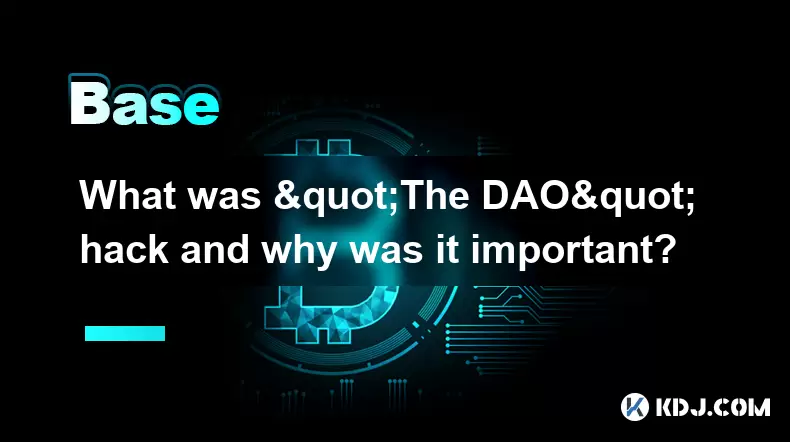
What was "The DAO" hack and why was it important?
Jul 19,2025 at 09:08pm
Background of 'The DAO''The DAO' (Decentralized Autonomous Organization) was a venture capital fund built on the Ethereum blockchain, launched in Apri...

What is the Inter-Blockchain Communication Protocol (IBC)?
Jul 19,2025 at 10:43am
Understanding the Inter-Blockchain Communication Protocol (IBC)The Inter-Blockchain Communication Protocol (IBC) is a cross-chain communication protoc...

How does sharding improve scalability?
Jul 20,2025 at 01:21am
Understanding Sharding in BlockchainSharding is a database partitioning technique that is increasingly being adopted in blockchain technology to enhan...

What is the "crypto trilemma" of scalability, security, and decentralization?
Jul 19,2025 at 06:28pm
Understanding the Concept of the Crypto TrilemmaThe crypto trilemma refers to the challenge of simultaneously achieving scalability, security, and dec...

How to get a job in crypto?
Jul 20,2025 at 08:14am
Understanding the Crypto Industry LandscapeThe cryptocurrency industry is a rapidly evolving space that includes blockchain technology, decentralized ...

What is slashing in proof-of-stake?
Jul 20,2025 at 06:07am
Understanding Slashing in Proof-of-StakeIn a Proof-of-Stake (PoS) blockchain network, slashing refers to the penalty mechanism used to deter validator...

What was "The DAO" hack and why was it important?
Jul 19,2025 at 09:08pm
Background of 'The DAO''The DAO' (Decentralized Autonomous Organization) was a venture capital fund built on the Ethereum blockchain, launched in Apri...
See all articles

























